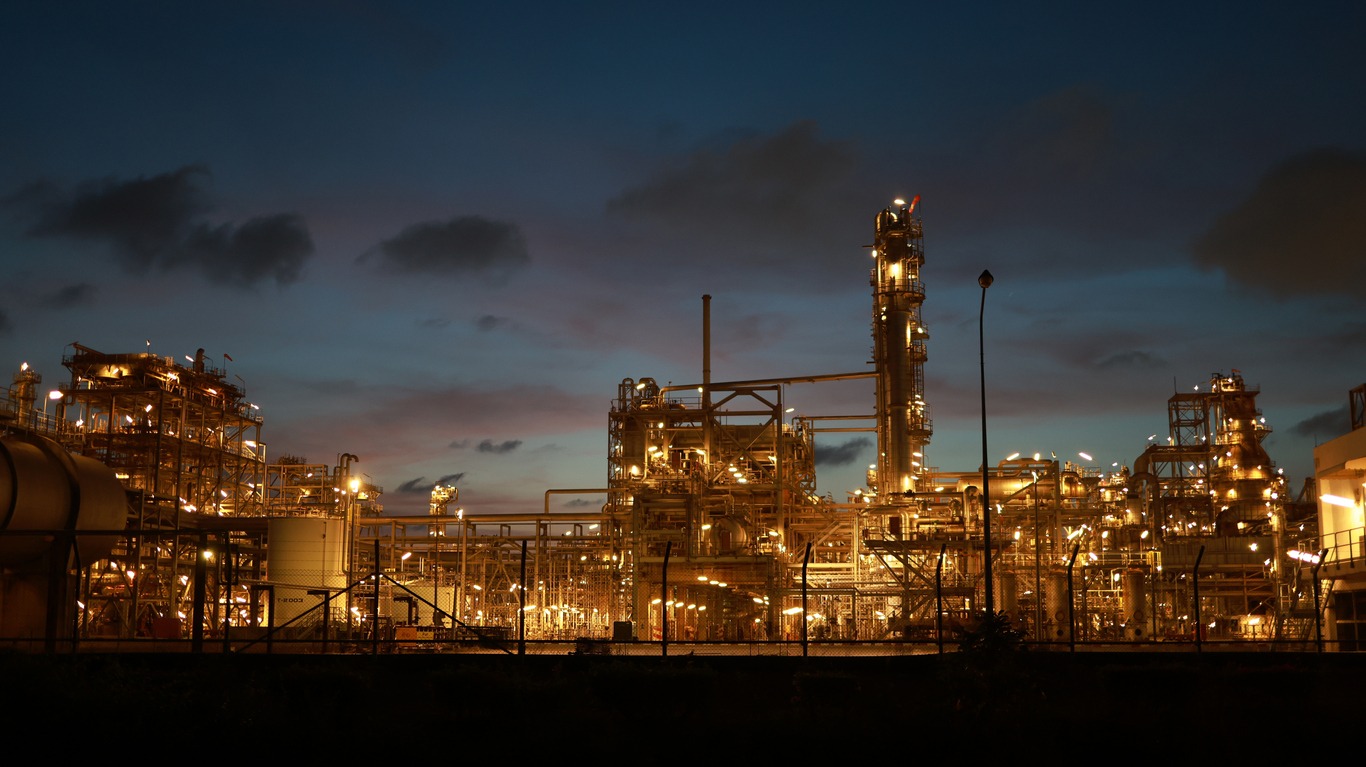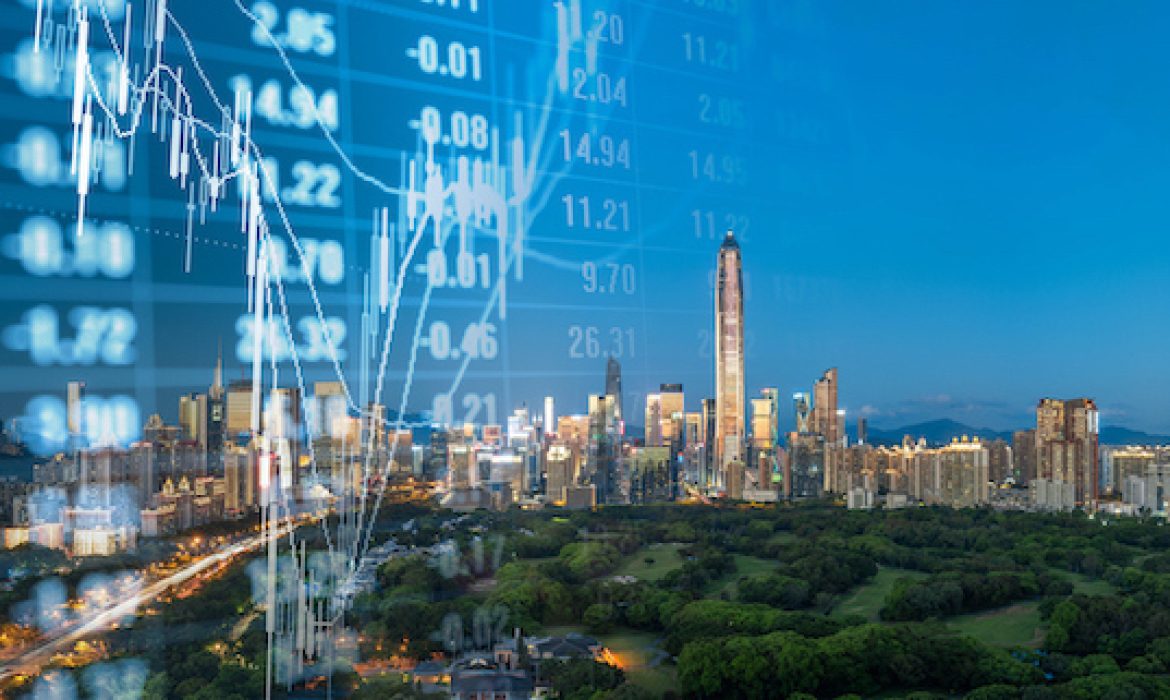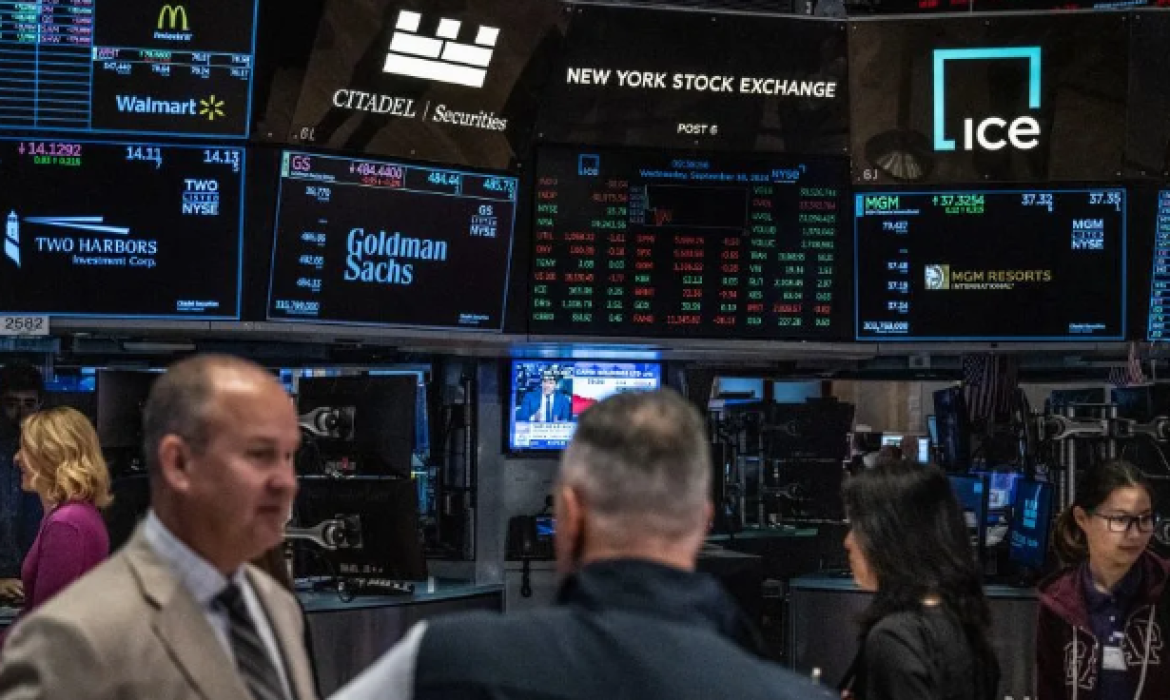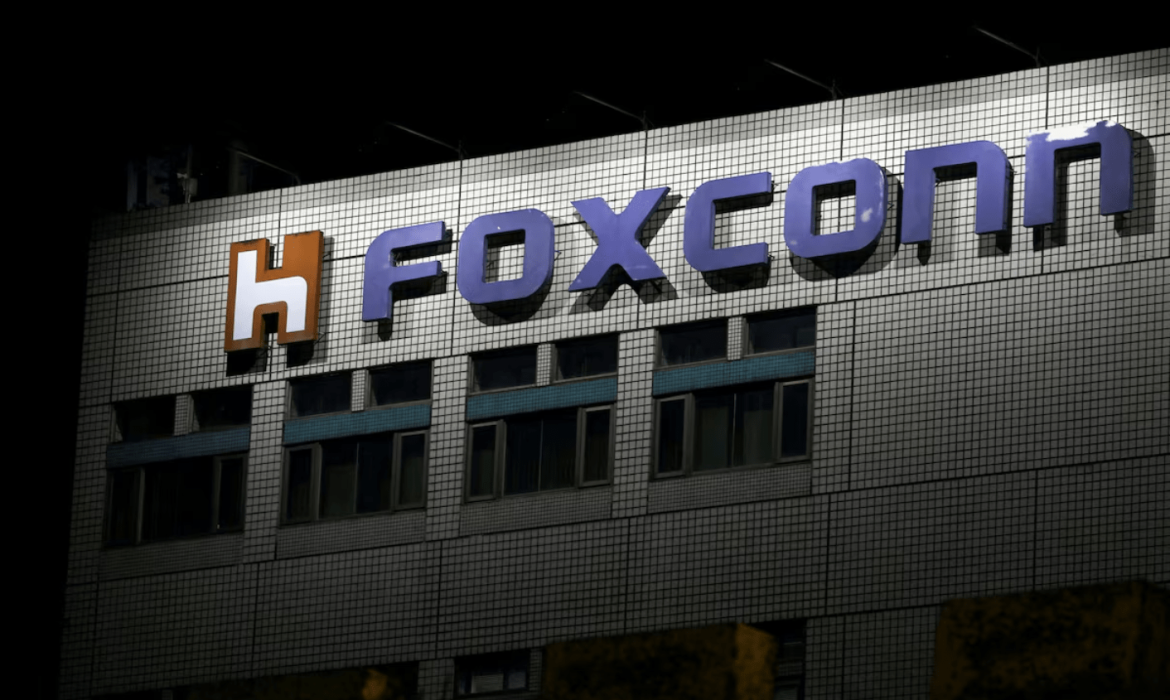Daily Synopsis of the New York market close – May 13, 2025
Date Issued – 13th May 2025
Preview
Gold steadied near $3,240 as US-China trade optimism pressured haven demand, with the dollar and Treasury yields climbing. Meanwhile, Honda slashed its profit forecast by 59%, citing tariffs and weak EV demand, while delaying its Canada EV plans. Chinese markets retreated as concerns grew over stalled stimulus following the tariff truce, though the yuan hit a six-month high. Boeing gained traction as China lifted its delivery ban on US-made jets, signaling progress but leaving uncertainties tied to the 90-day trade reprieve. Bond markets shifted focus to inflation data, with 10-year yields rising to 4.47% as recession fears faded, reducing expectations for near-term Fed rate cuts.
Gold Steadies Amid US-China Trade Optimism
Gold prices stabilized near $3,240 an ounce after Monday’s 2.7% drop, as easing US-China trade tensions shifted investor focus toward riskier assets. The temporary tariff reductions—slashing US duties on Chinese imports to 30% and Beijing lowering levies to 10%—sparked a rally in the US dollar and Treasury yields, pressuring the non-yielding metal. While gold remains nearly 25% higher year-to-date, traders recalibrated expectations for Federal Reserve rate cuts, further tempering bullion’s appeal. Analysts caution that uncertainty persists over the durability of the trade truce, leaving room for volatility in gold markets.
Investment Insight: Gold’s pullback highlights the metal’s sensitivity to shifts in macroeconomic sentiment. Investors should monitor the sustainability of US-China trade progress and its impact on risk assets. A cautious stance may be prudent, with gold consolidating between $3,150 and $3,350 an ounce, offering potential entry points amid geopolitical uncertainties. Diversifying into silver and platinum could also balance portfolios as industrial demand rises.
Honda Slashes Profit Forecast as Tariffs and EV Demand Weigh
Honda Motor expects a 59% drop in operating profit for the fiscal year ending March 2026, projecting ¥500 billion ($3.38 billion) compared to ¥1.21 trillion last year. The automaker cited U.S. tariffs on foreign-made vehicles and rising competition from Chinese EV manufacturers as key headwinds. Additionally, Honda will delay its plans for an EV supply chain in Ontario, Canada, by two years, attributing the pause to sluggish EV demand. Despite the challenges, Honda shares rose 1.01% in Tokyo trading, reflecting broader market optimism.
Investment Insight: Honda’s forecast underscores the pressure traditional automakers face from geopolitical policies and the rapid rise of Chinese EV players. Investors should assess the long-term viability of legacy automakers’ EV strategies amid evolving trade dynamics and market shifts. Honda’s decision to delay its Canadian EV supply chain signals potential challenges in scaling EV production profitably, emphasizing the importance of diversification in the sector.
Chinese Markets Retreat as Trade Optimism Fades
Chinese stocks slid on Tuesday, with the Hang Seng China Enterprises Index (^HSCE) falling 1.9% after a 3% rally the previous session. Investors grew concerned that the US-China tariff truce might curtail Beijing’s willingness to implement further stimulus measures, dampening hopes for stronger economic support. Onshore, the CSI 300 Index (000300.SS) gave up early gains, reflecting caution over the lingering impact of US import duties and the potential for renewed trade tensions. The yuan, however, climbed to a six-month high, signaling confidence in currency stability despite uncertainties surrounding the 90-day tariff reprieve.
Investment Insight: The selloff highlights investor skepticism about the durability of the US-China trade deal and its implications for Chinese economic policy. While improved sentiment has driven short-term rallies, concerns about corporate earnings and constrained stimulus could weigh on equity performance. Investors should brace for volatility in Chinese markets, balancing exposure with sectors less sensitive to trade policy while monitoring signs of further fiscal or monetary support from Beijing.

China Lifts Ban on Boeing Deliveries Amid Trade Truce
China has lifted its ban on domestic airlines taking delivery of Boeing aircraft following the recent tariff reduction agreement between Beijing and Washington. The move allows deliveries of U.S.-made planes to resume, with Chinese carriers expected to take 25 out of 30 undelivered 737 MAX jets and several 777 freighters. Boeing, which counts China as 10% of its commercial backlog, had been forced to hold inventory and attempt resales during the trade dispute. This development marks a positive turn for Boeing, though uncertainties remain as the 90-day negotiation period progresses.
Investment Insight: Boeing’s regained access to the Chinese market is a critical win, given the country’s significance as a growing aviation hub. Investors should monitor how quickly deliveries ramp up and whether geopolitical risks reemerge after the 90-day tariff reprieve. While this signals near-term stabilization for Boeing, its high inventory levels and ongoing production adjustments reflect lingering vulnerabilities. Diversified exposure to aerospace stocks may mitigate risks tied to trade volatility.
Market price: Boeing Co. (BA): USD 198.53
Bond Markets Shift Focus to Inflation as Recession Fears Recede
The US-China trade truce has eased recession concerns, triggering a selloff in Treasuries and driving yields higher. Benchmark 10-year yields climbed to 4.47%, while policy-sensitive two-year yields neared 4%, reflecting reduced expectations for near-term Federal Reserve rate cuts. Goldman Sachs and Citigroup both pushed back timelines for easing, with Goldman now forecasting three cuts starting in December. Meanwhile, April’s inflation data is under scrutiny for signs of tariff-related price pressures, with core inflation expected to hold at 2.8%. Analysts remain cautious, citing risks from fiscal policy and persistent deficits.
Investment Insight: The bond market’s recalibration highlights a delicate balance between inflation risks and slower monetary easing. Rising yields present strategic opportunities for fixed-income investors, particularly if 10-year yields approach the 4.8% peak seen earlier this year. However, elevated deficits and potential labor market weakness could prompt a more dovish Fed stance later in 2025. Investors should remain vigilant, balancing long-duration Treasuries with shorter-term instruments to manage rate volatility while keeping an eye on inflation trends and fiscal policy developments.
Conclusion
Markets are navigating a delicate balance between trade optimism and lingering economic uncertainties. The US-China tariff truce has eased recession fears, but its durability remains in question, driving volatility across asset classes. Gold, Chinese equities, and bonds are adjusting to shifting investor sentiment, while Honda and Boeing face sector-specific challenges amid evolving trade dynamics. Inflation data and fiscal policy developments will remain key drivers in the weeks ahead, with the Federal Reserve’s next moves closely watched. Investors should stay cautious, diversify across industries and geographies, and remain agile in responding to potential shifts in macroeconomic and geopolitical conditions.
Upcoming Dates to Watch
- May 13th, 2025: US CPI, UK Unemployment rate, Japan PPI
- May 14th, 2025: German CPI, Japan Foreign Bonds buying, South Korea Trade Balance
- May 15th, 2025: US GDP, UK GDP, Trade Balance; German WPI, Switzerland PPI, Europe Economic Forecast, Japan GDP
- May 16th, 2025: Japan Industrial Production, Hong Kong GDP
Find below some of our Buy/Sell Recommendations. Balfour Capital Group is a distinguished global boutique investment management firm with $350 million AUM and over 1000 Clients.

Disclaimer: This post provides financial insights for informational purposes only. It does not constitute financial advice or recommendations for investment decisions.
Daily Synopsis of the Asia market close – May 12, 2025
Date Issued – 12th May 2025
Preview
Global markets rallied as the U.S. and China agreed to reduce tariffs and pause new duties for 90 days, lifting equities and oil prices while easing recession fears. S&P 500 and Nasdaq futures surged, and Brent crude rose over 3%, signaling renewed optimism for global trade. Meanwhile, Asian pharma stocks slid after Donald Trump pledged steep U.S. drug price cuts, raising regulatory risks for the sector. In South Asia, Pakistani and Indian stocks soared following a ceasefire, shifting focus back to growth prospects. On the tech front, Bank of America reaffirmed a bullish outlook for AI capex in 2025, with Nvidia and Broadcom identified as top beneficiaries of robust hyperscaler spending.
Markets Rally as U.S. and China Agree to Tariff Reductions and 90-Day Pause
Global markets surged after the U.S. and China reached an agreement to cut tariffs and implement a 90-day pause in their trade dispute. The U.S. reduced tariffs on Chinese imports to 30%, while China’s duties on U.S. goods fell to 10%. S&P 500 and Nasdaq futures jumped 2.8% and 3.6%, respectively, with Europe’s STOXX 600 gaining 1%. The dollar strengthened, rising 1.1% against the yen, while 10-year U.S. Treasury yields climbed 6 basis points to 4.435%.
Analysts described the move as a “step in the right direction,” boosting risk sentiment and easing concerns over global supply chain disruptions. However, the temporary nature of the agreement suggests further volatility if a final deal is not reached.
Investment Insight
The tariff reduction and market rally create opportunities in equities, particularly in export-driven sectors and Chinese ADRs. However, the 90-day pause is a reminder of ongoing uncertainty. Investors should remain cautious, prioritizing companies with resilient supply chains. Diversifying into high-quality bonds or U.S. dollar assets may mitigate risks from potential volatility as negotiations continue.
Trump’s Drug Price Pledge Rattles Pharma Stocks
Asian pharmaceutical stocks slid on Monday as former President Donald Trump vowed to slash US drug prices by up to 80%. Trump’s proposed executive order would impose a “most favoured nation” policy, capping US drug prices at the lowest rates available globally.
Shares in Samsung Biologics, SK Biopharmaceuticals, and BeiGene dropped 4%, 2.5%, and 7.9%, respectively, while Sun Pharma led losses in India, falling over 5%. The pharmaceutical industry, which has historically opposed such measures, warned the move could stifle innovation and undermine research funding. Trump dismissed these claims, signaling a tough stance against industry lobbying. The announcement echoes prior efforts during his presidency, which were blocked by legal and political resistance.
Investment Insight
Trump’s renewed focus on drug pricing could heighten regulatory risk for pharmaceutical stocks, particularly those with significant US exposure. Investors should monitor developments closely, as the proposed “most favoured nation” policy may pressure margins and disrupt global pricing strategies. Diversification into healthcare sectors less reliant on drug pricing, such as medical devices or diagnostics, could provide a strategic hedge.
Pakistani, Indian Stocks Surge Amid Ceasefire Optimism
Markets in Pakistan and India rallied sharply after a ceasefire agreement over the weekend eased geopolitical tensions. Pakistan’s KSE-30 Index soared 9.2%, triggering a brief trading halt, while India’s NSE Nifty 50 Index climbed 3%.
Investors are pivoting back to economic fundamentals, with India’s growth prospects buoyed by anticipated US trade deals and potential rate cuts, while Pakistan eyes IMF funding and domestic reforms. The Indian rupee gained 0.9% offshore, and volatility gauges eased, signaling a positive shift in sentiment. However, lingering doubts over the truce’s durability could temper gains, as reports of violations surfaced shortly after the agreement.
Investment Insight
The ceasefire offers a tactical opportunity for investors to capitalize on renewed momentum in South Asian markets. In India, sectors tied to domestic growth, such as financials and infrastructure, stand to benefit from foreign inflows and improving liquidity. For Pakistan, IMF disbursements and structural reforms could support a medium-term recovery, particularly in undervalued equities. Caution is warranted, however, as geopolitical risks remain a potential overhang.

Oil Prices Surge on US-China Tariff Reduction Deal
Oil prices jumped over 3% on Monday as the U.S. and China agreed to reduce tariffs and suspend additional duties for 90 days, improving the outlook for global trade and crude demand. Brent crude rose $2.11 (+3.3%) to $64.14 per barrel, while WTI crude climbed $2.12 (+3.47%) to $63.14. The agreement between the world’s largest energy consumers lifted market sentiment, adding to last week’s gains of over 4% across both benchmarks. However, OPEC+ plans to increase output and ongoing U.S.-Iran nuclear talks, which could lead to higher supply, tempered further price increases.
Investment Insight
The easing of trade tensions between the U.S. and China is a bullish signal for oil demand recovery, making energy stocks and crude-linked ETFs attractive in the near term. However, investors should remain cautious as rising OPEC+ output and potential developments in U.S.-Iran negotiations could limit further upside in oil prices. Diversifying into integrated energy firms with downstream operations may provide a hedge against potential market volatility.
AI Capex Booms in 2025, Nvidia and Broadcom Remain Top Picks
Bank of America (BofA) forecasts a robust outlook for AI capital expenditures in 2025, with spending projected to reach $414 billion—up 44% from 2024. Key U.S. hyperscalers like Google, Microsoft, and Meta have reaffirmed or increased their capex guidance, signaling strong demand for AI infrastructure. Nvidia and Broadcom remain BofA’s top picks, while AMD and Marvell Technology also stand to benefit from expanded AI spending. Despite concerns over efficiency-driven models like China’s DeepSeek AI, hyperscalers continue to prioritize scaling frontier models and enterprise AI, driving demand for advanced chips and data center solutions.
Investment Insight
The sustained rise in AI capex underscores long-term opportunities in semiconductor and infrastructure firms supporting AI growth. Nvidia and Broadcom’s leadership in AI chips positions them for outsized gains, while investors may also explore exposure to Marvell and AMD for diversification. However, with competition and efficiency innovations like DeepSeek AI evolving rapidly, targeting companies with cutting-edge R&D and diversified client bases will be key for sustained returns.
Conclusion
Markets are riding a wave of optimism as U.S.-China tariff reductions, a South Asian ceasefire, and robust AI spending drive investor sentiment. While equity and commodity markets respond positively to easing trade tensions, the temporary nature of agreements highlights the need for caution in the face of geopolitical and regulatory risks. Energy and AI sectors present compelling opportunities, while defensive plays remain a prudent hedge against volatility. As global growth narratives take shape, investors should stay attuned to macroeconomic data and policy developments that could define market direction in the weeks ahead.
Upcoming Dates to Watch
- May 13th, 2025: US CPI, UK Unemployment rate, Japan PPI
- May 14th, 2025: German CPI, Japan Foreign Bonds buying, South Korea Trade Balance
- May 15th, 2025: US GDP, UK GDP, Trade Balance; German WPI, Switzerland PPI, Europe Economic Forecast, Japan GDP
- May 16th, 2025: Japan Industrial Production, Hong Kong GDP
Find below some of our Buy/Sell Recommendations. Balfour Capital Group is a distinguished global boutique investment management firm with $350 million AUM and over 1000 Clients.

Disclaimer: This post provides financial insights for informational purposes only. It does not constitute financial advice or recommendations for investment decisions.
Daily Synopsis of the New York market close – May 9, 2025
Date Issued – 9th May 2025
Preview
Asian markets surged Friday, with Japan’s Nikkei and Taiwan’s benchmark rallying on U.S.-UK trade optimism, while Bitcoin reclaimed $100,000, nearing its $109,000 record high. TSMC posted record April sales as customers rushed orders ahead of looming U.S. tariffs, highlighting the chipmaker’s reliance on AI-driven demand despite tariff risks. Meanwhile, Mitsubishi Heavy projected 10% profit growth this year, driven by robust defence demand, though U.S. tariff uncertainty persists. In China, slowing export growth and factory activity contraction underscore the economic toll of U.S.-China trade tensions as talks loom this weekend. Investors face a complex landscape of geopolitical risks and opportunities.
Asian Markets Surge on Trade Optimism; Bitcoin Nears All-Time High
Asian equities rallied Friday as Japan’s Nikkei rose 1.7% and Taiwan’s benchmark gained 1.8%, driven by optimism surrounding a U.S.-UK trade deal and its potential implications for broader tariff reductions. Technology stocks led gains, while MSCI’s Asia-Pacific index climbed 0.4%. U.S. crude extended its 3% Thursday surge, while Bitcoin soared to $103,909.17, its highest since January, amid strong inflows into crypto ETFs and whale buying. However, caution prevailed as the U.S.-UK deal left critical tariffs intact, tempering expectations for Sino-U.S. trade talks this weekend. Meanwhile, the dollar index touched a one-month high, supported by rising Treasury yields.
Investment Insight: While the U.S.-UK trade deal offers limited immediate economic impact, it signals a pro-trade stance that could buoy market sentiment in the near term. Investors should monitor developments in Sino-U.S. negotiations, as constructive signals could further propel equities, particularly in export-sensitive sectors. Bitcoin’s rally highlights the growing institutional inflows, suggesting potential upside, but caution is warranted near resistance levels. Diversified exposure across equities, commodities, and digital assets remains prudent amidst evolving trade and macro dynamics.
Mitsubishi Heavy Projects 10% Profit Growth on Defence Strength
Mitsubishi Heavy Industries (MHI) forecasted a 9.6% rise in operating profit to 420 billion yen ($2.9 billion) for the fiscal year ending March 2026, driven by robust demand in its aerospace and defence segment, which is expected to grow 40%. Energy systems are also slated for a 17% profit increase. This follows a 35.6% profit growth last year, though pretax earnings of 374.5 billion yen fell short of the 401.6 billion yen analyst consensus. The company noted its guidance does not account for potential impacts from U.S. tariff policies, maintaining a cautious outlook.
Investment Insight: Mitsubishi Heavy’s strong positioning in defence and energy systems highlights resilience against global macro uncertainties. Investors may find value in the company’s growth trajectory, particularly in defence amid rising geopolitical tensions. However, ongoing U.S. tariff risks warrant close monitoring, with potential implications for profitability. Diversifying within industrials and defence-focused equities could mitigate sector-specific volatility.
Market price: Mitsubishi Heavy Industries Ltd. (TYO: 7011): JPY 2,732
China’s Exports Slow as Tariffs Bite, Trade Talks Loom
China’s export growth slowed to 8.1% in April, down from 12.4% in March, as U.S. tariffs of up to 145% on Chinese goods took effect. Exports to the U.S. fell 2.5%, while imports from the U.S. dropped 4.7%. The trade war’s toll is evident, with China’s factory activity contracting at its fastest pace in 16 months and U.S. growth turning negative in Q1. This weekend’s Geneva talks between U.S. and Chinese officials hold slim prospects for a breakthrough, with tariff reductions and export controls on the table. Meanwhile, China’s reliance on exports to the U.S., which accounted for 14.7% of its total goods exports last year, underscores the stakes for both economies.
Investment Insight: The persisting U.S.-China trade tensions add a layer of uncertainty for global markets. Investors should consider reallocating towards sectors less exposed to trade disruptions, such as domestic-focused industries or companies with diversified supply chains. Additionally, watch for potential easing measures from Beijing, as China may roll out stimulus to counteract trade-related slowdowns. Defensive strategies remain prudent amid heightened geopolitical and economic risks.

Bitcoin Reclaims $100,000 as Record High Comes Into Focus
Bitcoin surged above $100,000 on Thursday, gaining nearly 40% from last month’s low. The breakout follows a consolidation period and optimism around U.S. trade agreements, setting the stage for a potential retest of Bitcoin’s January high of $109,000. Analysts are closely watching resistance at $107,000 and a potential upside target of $120,000, while key support levels include $100,000 and $92,000. Despite the rally, declining trading volumes on major exchanges like Coinbase suggest muted interest.
Investment Insight: Bitcoin’s reclaiming of $100,000 signals strong momentum, but overbought technical indicators and declining volumes warrant a measured approach. Investors should monitor price action near $107,000 for resistance and $100,000 for potential breakdown risks. Long-term holders may benefit from maintaining exposure, while traders could target the $120,000 level if bullish momentum persists. Diversification remains critical as crypto markets remain volatile and sensitive to macroeconomic developments.
TSMC Sales Hit Record High as Tariff Fears Drive Order Surge
Taiwan Semiconductor Manufacturing Co. (TSMC) reported record April sales of T$349.57 billion ($10.76 billion), up 48.1% year-on-year, fueled by customers accelerating orders ahead of impending U.S. tariffs. Year-to-date revenue reached T$1.19 trillion, a 43.5% increase from 2024. This surge comes amid U.S. plans to impose a 32% tariff on Taiwanese imports starting July, alongside a 10% universal export tariff. Despite expanding U.S. production capacity, TSMC remains heavily reliant on overseas manufacturing. Robust demand for AI-related chips, especially from key customer Nvidia, continues to underpin TSMC’s growth trajectory.
Investment Insight: TSMC’s record performance underscores its critical role in the global chip supply chain, bolstered by AI-driven demand. However, looming U.S. tariffs pose risks to profitability and supply chain dynamics. Investors should view TSMC’s U.S. expansion as a strategic hedge but remain cautious about potential cost pressures. Long-term opportunities persist in AI and semiconductor growth, but near-term volatility could weigh on sentiment. Diversifying within the broader tech and semiconductor sector may help mitigate tariff-related risks.
Market price: Taiwan Semiconductor Manufacturing Co Ltd. (TPE: 2330): TWD 949.00
Conclusion
Global markets are navigating a complex web of trade dynamics, geopolitical tensions, and shifting investor sentiment. While optimism surrounding trade deals has fueled rallies in equities and Bitcoin, looming tariff risks and slowing economic indicators, particularly in China, temper the outlook. Companies like TSMC and Mitsubishi Heavy showcase resilience through strategic positioning in high-demand sectors like AI and defense, though external pressures remain a concern. Investors should maintain a cautious but opportunistic approach, focusing on diversified exposure across resilient industries while monitoring key developments in trade talks and macroeconomic policies to navigate the evolving global economic landscape effectively.
Upcoming Dates to Watch
- May 9th, 2025: China; PPI, CPI, Trade Balance
Find below some of our Buy/Sell Recommendations. Balfour Capital Group is a distinguished global boutique investment management firm with $350 million AUM and over 1000 Clients.

Disclaimer: This post provides financial insights for informational purposes only. It does not constitute financial advice or recommendations for investment decisions.
Daily Synopsis of the New York market close – May 8, 2025
Date Issued – 8th May 2025
Preview
US stock futures rallied on optimism surrounding a potential US-UK trade deal, with the Dow, S&P 500, and Nasdaq futures climbing up to 1%. Meanwhile, the Trump administration’s plan to repeal Biden-era AI chip export restrictions drove semiconductor stocks higher, with Nvidia gaining 3.1%. In China, steel exports are expected to drop by 20% in Q2 due to trade war tariffs, further pressuring domestic oversupply and prices. Utility stocks outperformed the S&P 500 as robust power demand—up 5.5% year-over-year—defies fears of a recession, bolstered by data center expansion and manufacturing growth. Toyota forecast a 21% profit decline for FY2025, citing US tariffs, a strong yen, and rising costs, despite steady hybrid demand. Investors are watching closely for trade developments, infrastructure trends, and sector-specific challenges as volatility persists across global markets.
Futures Rally on US-UK Trade Deal Optimism
US stock futures climbed Thursday morning as investor sentiment surged following President Donald Trump’s announcement of a trade deal with a “major trading partner,” widely believed to be the United Kingdom. Dow Jones Industrial Average futures rose 0.6%, while S&P 500 and Nasdaq 100 futures gained 0.7% and 1%, respectively. Investors are also eyeing upcoming US-China trade talks scheduled for this weekend, though Trump confirmed tariffs on China would remain in place for now. Key economic data, including weekly jobless claims and inflation expectations, will also shape market direction. In earnings news, Warner Bros. Discovery and Peloton are set to report results before the bell.
Investment Insight: Investors should monitor developments in US-UK trade relations, as a finalized deal could boost transatlantic economic activity and support equities, particularly in trade-sensitive sectors like industrials and technology. Additionally, with US-China talks on the horizon, any progress could further alleviate trade uncertainties, providing upward momentum for global markets. Balancing optimism with caution remains critical, as macroeconomic data and geopolitical risks continue to influence short-term volatility.
Trump Administration Overhauls AI Chip Export Rules
The Trump administration is set to repeal the Biden-era AI Diffusion Rule, a sweeping policy that imposed global restrictions on chip exports, including countries outside China. While the move will maintain strict measures against Beijing, it signals a shift toward a more transactional approach, with bilateral agreements likely to guide chip access for nations like the UAE and Saudi Arabia. Semiconductor stocks rallied on the news, with Nvidia climbing 3.1% and the Philadelphia Semiconductor Index gaining 1.7%. The policy overhaul, aiming to simplify regulations, may provide relief to tech companies like Nvidia and Oracle, while creating fresh uncertainty for global AI trade dynamics.
Investment Insight: The rollback of the AI Diffusion Rule could unlock growth opportunities for US semiconductor companies in non-China markets, particularly in regions with high AI investment ambitions, such as the Middle East. Investors should monitor Trump’s forthcoming bilateral chip accords, which may create favorable conditions for firms with exposure to these markets. However, tighter enforcement on diversion hotspots like Malaysia and Thailand highlights the need for caution, as geopolitical risks and shifting trade policies continue to influence the sector’s outlook.
Trade War Pressures China’s Steel Industry Amid Slumping Exports
China’s steel exports are forecast to decline by up to 20% in the second quarter, as the US-China trade war and global protectionist measures slash overseas demand. Key markets like South Korea and Vietnam have imposed duties to block rerouted Chinese steel, while US tariffs have disrupted transshipment trades. Analysts warn this will aggravate domestic oversupply, depressing prices and steelmaker margins, with further repercussions expected in downstream sectors like electric vehicles and appliances. The industry, already grappling with weak property sector demand, faces increasing pressure as second-quarter domestic demand seasonally slows.
Investment Insight: Investors in commodities and steel-related industries should brace for heightened volatility as China’s steel oversupply weighs on global prices. The trade war’s ripple effects, particularly on downstream sectors reliant on steel, could further dampen economic activity in related industries. Diversification into markets less exposed to trade tensions or oversupply risks, such as alternative metals or renewable energy infrastructure, may provide a more resilient investment strategy.
Utility Stocks Shine Amid Surging Power Demand
Utility stocks have outperformed the S&P 500 this year, with the Utilities Select Sector ETF (XLU) up over 6%, compared to a 4% decline in the broader index. Robust power demand—up 5.5% year-over-year—continues to defy recession fears, driven by industrial expansion in manufacturing and data center growth fueled by the AI boom. Utility companies, less exposed to tariff uncertainties, are benefitting from strong investment in US infrastructure. Major players like Duke Energy (+13% YTD) and Southern Company (+12% YTD) are positioned for sustained growth, with Duke projecting record infrastructure development over the next decade.
Investment Insight: Utilities offer a defensive play in uncertain markets, combining stable demand with growth tailwinds from industrial electrification and AI-driven data center expansion. With power-intensive sectors like semiconductors and advanced manufacturing bolstering demand, utility stocks remain attractive for income-focused investors seeking resilience amid broader market volatility.

Toyota Profit Forecast Falls Amid Tariffs and Strong Yen
Toyota Motor, the world’s largest carmaker, projected a 21% drop in operating profit for the fiscal year ending March 2026, forecasting ¥3.8 trillion ($26 billion) compared to ¥4.8 trillion last year. The decline reflects pressure from US tariffs, a stronger yen, and elevated material costs. While hybrid vehicle demand remains robust, tariffs risk dampening US-bound exports and consumer sentiment. Toyota also faces challenges in China, where competition from local automakers continues to weigh on sales. The automaker may be forced to expand US production, potentially raising labor costs and capital expenditure.
Investment Insight: Tariff pressures and currency volatility highlight the risks for global automakers heavily dependent on exports. Investors should monitor Toyota’s ability to navigate rising costs and leverage its hybrid leadership to offset sluggish margins. Diversification into EVs and regional production hubs could provide long-term stability, but near-term headwinds warrant caution in the auto sector, particularly for companies with significant exposure to US and Chinese markets.
Market price: Toyota Motor Corp (TYO: 7203): JPY 2,672
Conclusion
Markets are navigating a mix of optimism and uncertainty as trade developments, sector-specific challenges, and macroeconomic shifts take center stage. US-UK trade deal expectations and robust power demand have buoyed equities like utilities and semiconductors, while tariffs and currency pressures weigh on automakers like Toyota and global steel markets. Investors should remain vigilant, balancing opportunities in resilient sectors such as AI-driven infrastructure and utilities with caution toward trade-sensitive industries. As geopolitical and economic trends evolve, strategic diversification and close monitoring of policy shifts will be key to navigating the complex global investment landscape.
Upcoming Dates to Watch
- May 8th, 2025: US Nonfarm productivity
- May 9th, 2025: China; PPI, CPI, Trade Balance
Find below some of our Buy/Sell Recommendations. Balfour Capital Group is a distinguished global boutique investment management firm with $350 million AUM and over 1000 Clients.

Disclaimer: This post provides financial insights for informational purposes only. It does not constitute financial advice or recommendations for investment decisions.
Daily Synopsis of the New York market close – May 7, 2025
Date Issued – 7th May 2025
Preview
US-China trade talks scheduled in Geneva have lifted market sentiment, with US futures rising and Asian equities rallying. Oil prices continued their upward trend, nearing $60 per barrel, supported by optimism over trade and shrinking US crude inventories. However, hedge fund billionaire Paul Tudor Jones remains bearish, predicting fresh market lows as high tariffs and interest rates weigh heavily on stocks. Meanwhile, Palantir shares sank 15%, despite strong earnings, as investors balked at its lofty valuation. In Hong Kong, CATL prepares for a $5 billion listing—potentially the largest in four years—offering a modest discount to its Shenzhen-listed shares, signaling confidence in global demand for EV supply chain investments. Investors face a volatile landscape, with defensive strategies and selective positioning remaining key.
Futures Rise as US-China Trade Talks Rekindle Optimism
US stock futures edged higher on Wednesday, with the Dow, S&P 500, and Nasdaq Composite futures gaining 0.56%, 0.60%, and 0.65%, respectively, following the announcement of US-China trade talks. Treasury Secretary Scott Bessent and Trade Representative Jamieson Greer are set to meet Chinese officials in Geneva this weekend, marking the first high-level dialogue since the US escalated tariffs to 145% on Chinese imports. Asian markets rallied on the news, aided further by China’s monetary easing measures aimed at offsetting tariff impacts. Meanwhile, oil prices advanced, with WTI approaching $60 per barrel, amid trade optimism and supply constraints. Investors remain cautious ahead of the Federal Reserve’s policy update later today, as Chair Jerome Powell’s commentary will gauge the central bank’s stance amid growing trade and economic uncertainty.
Investment Insight: The rekindling of US-China trade talks could provide a short-term boost to market sentiment, particularly for export-reliant sectors and commodities like oil. However, uncertainty around the outcome of these negotiations suggests investors should remain selective, focusing on defensive plays and companies with minimal exposure to tariff headwinds. Diversifying into international equities, particularly in regions benefiting from China’s stimulus measures, may also mitigate risk while capturing upside potential.
Paul Tudor Jones Predicts Fresh Market Lows Despite Possible Trade Easing
Hedge fund titan Paul Tudor Jones expects US stocks to hit new lows, even if trade tensions with China ease. Speaking on Tuesday, he highlighted pressure from escalating tariffs and high interest rates, asserting that neither the White House nor the Federal Reserve is likely to relent without another steep market decline. Jones estimated that while investors anticipate a reduction in tariffs to around 50%, the remaining duties would still act as a major drag on US GDP, comparable to the largest consumer tax hike since the 1960s. With the Fed expected to hold rates steady this week, Jones believes a policy shift from Trump or the central bank will only come after markets bottom out. Other institutions, including Wells Fargo and HSBC, echoed cautious outlooks, citing ongoing risks from trade and slowing growth momentum.
Investment Insight: Investors should brace for heightened volatility, as policy inertia on tariffs and rates creates a challenging environment for equities. Defensive positioning in sectors resilient to global trade disruptions, alongside increased cash allocations, could mitigate downside risk. For opportunistic investors, potential market lows may open attractive entry points for high-quality undervalued assets once policy catalysts emerge.
CATL Eyes $5 Billion Hong Kong Listing with Modest Discount
Chinese battery giant CATL is preparing for a $5 billion Hong Kong listing, potentially the largest in the city since 2021. According to sources, the stock may be offered at a discount of less than 10%—likely in the mid-single digits—to its Shenzhen-listed shares. The company aims to secure cornerstone and anchor investors for roughly half of the offering ahead of book building set to begin next week. Final pricing details remain pending, but the modest discount reflects CATL’s confidence in strong demand for its shares amidst growing global interest in electric vehicle supply chains.
Investment Insight: CATL’s strategic move to diversify its investor base via a Hong Kong listing underscores the growing prominence of EV-related sectors. While the modest discount signals robust demand, investors should carefully evaluate valuations relative to existing Shenzhen shares. With cornerstone backing and sector tailwinds, the listing may provide an attractive entry point for long-term investors seeking exposure to EV battery growth.

Palantir Shares Plunge 15% as Valuation Concerns Eclipse Strong Earnings
Palantir Technologies saw its stock drop 15% on Tuesday, closing at $105.32, despite reporting strong Q1 earnings and raising full-year guidance. Revenue surged 39% year-over-year to $883.9 million, beating estimates by $21.7 million, while earnings per share met expectations. However, investors balked at its sky-high valuation, with a price-to-earnings ratio of 561x and forward P/E of 148x—far above peers in the AI and tech space. Analysts have flagged the risk of overvaluation, with some warning that even a steep correction wouldn’t bring the stock in line with industry benchmarks. The sell-off follows a 42% rally year-to-date, underscoring concerns about sustainability at current levels.
Investment Insight: Palantir’s premium valuation reflects optimism about its leadership in AI and software, but the stock’s extreme multiples suggest significant downside risk if growth expectations falter. Cautious investors may consider waiting for more reasonable entry points, while long-term holders should monitor valuation metrics closely. Diversifying into other AI-driven names with more balanced valuations could provide exposure with reduced risk.
Oil Rises Amid US-China Trade Optimism and Shrinking US Stockpiles
Oil prices extended gains on Wednesday, with Brent nearing $63 per barrel and WTI approaching $60, as the US and China prepare to resume trade talks in Switzerland. The renewed dialogue, following months of escalating tariffs, has bolstered hopes for easing economic tensions. The rally builds on a 3% surge in the previous session, further supported by a 4.49-million-barrel draw in US crude inventories, as reported by the American Petroleum Institute. However, broader market dynamics remain cautious, with OPEC+ maintaining plans to boost supply and the Energy Information Administration trimming its US output forecast to 13.42 million barrels a day for 2025.
Investment Insight: Rising oil prices reflect improved sentiment on trade and tighter US supply, but sustained gains may be challenged by OPEC+ supply increases and global demand uncertainties. Investors should monitor geopolitical developments and inventory data closely, as volatility could present opportunities in energy equities or oil futures for both short-term gains and hedging strategies.
Conclusion
Global markets are navigating a critical juncture, with trade uncertainty, economic slowdown fears, and monetary policy shifts shaping investor sentiment. As the Federal Reserve prepares to clarify its position amid inflationary pressures and recession risks, markets remain cautious. Strong corporate performances, like Foxconn’s revenue surge, highlight resilience in key sectors, while tumbling oil prices and subdued Asian stocks reflect broader vulnerabilities. With upcoming U.S.-China trade developments and Chinese economic data, investors will need to balance risk and opportunity carefully. Defensive strategies, diversification, and attention to monetary signals will be essential as markets respond to evolving global dynamics.
Upcoming Dates to Watch
- May 7th, 2025: Fed Interest Rate Decision
- May 8th, 2025: US Nonfarm productivity
- May 9th, 2025: China; PPI, CPI, Trade Balance
Find below some of our Buy/Sell Recommendations. Balfour Capital Group is a distinguished global boutique investment management firm with $350 million AUM and over 1000 Clients.

Disclaimer: This post provides financial insights for informational purposes only. It does not constitute financial advice or recommendations for investment decisions.
Daily Synopsis of the New York market close – May 6, 2025
Date Issued – 6th May 2025
Preview
Markets are facing a mixed outlook as trade tensions, monetary policy, and sector-specific developments shape sentiment. The dollar strengthened on robust U.S. services data, while S&P 500 futures slipped and Asian shares showed uneven performance. Oil prices rebounded slightly after hitting four-year lows, promising cheaper gas for summer drivers but pressuring energy producers. DoorDash’s $3.9 billion acquisition of Deliveroo highlights consolidation in the food delivery sector, while the DOJ’s push to break up Google’s ad-tech business raises regulatory risks for tech. Investors are navigating a volatile landscape, balancing inflation concerns, trade impacts, and opportunities in defensive sectors.
Dollar Gains as Stock Futures Slip Amid Trade Uncertainty
The dollar edged higher, reversing a two-day decline, as stronger-than-expected US services data signaled resilience in the economy despite ongoing trade tensions. Asian currencies, led by the Taiwanese dollar, saw modest pullbacks following a rally fueled by optimism over potential tariff reductions. Equity futures for the S&P 500 fell 0.4%, while European and Asian markets also showed weakness. Oil prices rebounded, gold rose 0.8% on Chinese demand, and Treasury yields climbed for a third straight session. Investors brace for Wednesday’s Fed decision as the ECB signals continued rate cuts, keeping uncertainty elevated amid trade and monetary policy shifts.
Investment Insight: The market’s cautious tone underscores the continued impact of trade tensions and tariff policy on global asset flows. With US economic data showing resilience in services but weakness in manufacturing, investors should remain defensive, focusing on quality assets with limited exposure to trade-sensitive sectors. Gold and Treasury yields reflect a flight to safety, signaling the need to balance risk with hedging strategies as volatility persists.
DoorDash Acquires Deliveroo in $3.9 Billion Deal to Expand European Presence
DoorDash has reached an agreement to acquire UK-based Deliveroo for £2.9 billion ($3.85 billion), marking a strategic move to bolster its market share in Europe and challenge competitors like Just Eat and Uber Eats. The deal, priced at 180 pence per share, follows renewed talks between the firms after prior disagreements over valuation. Deliveroo, whose largest markets are the UK and Ireland, will offer DoorDash access to its 10-country network, where DoorDash has minimal presence. Combined, the companies handled $90 billion in orders in 2024. Notably, Deliveroo’s pandemic-era growth has faded, with its stock struggling since a 2021 IPO. The transaction is expected to face minimal regulatory hurdles.
Investment Insight: This deal underscores the consolidation trends in the food delivery sector as firms seek scale in a fiercely competitive, low-margin market. For investors, DoorDash’s acquisition of Deliveroo offers potential long-term growth in underpenetrated European markets. However, attention should remain on profitability challenges in the sector and macroeconomic headwinds, such as inflation and shifting consumer spending habits. Evaluation of synergies and execution risks will be crucial.
Market price: DoorDash Inc (DASH): USD 205.40
U.S. Pushes to Break Up Google’s Ad-Tech Business After Monopoly Ruling
A U.S. federal judge has found Google illegally monopolized online ad-tech markets, prompting the Department of Justice to propose divestitures of its AdX advertising marketplace and DFP ad server. The DOJ argued such measures are necessary to restore competition in ad exchanges and publisher ad servers, critical tools for monetizing digital content. Google, however, opposes the breakup, favoring behavioral remedies like opening real-time bidding to competitors. This case, set for trial in September, follows similar antitrust scrutiny in the EU, where Google’s prior concessions failed to satisfy publishers. Google insists the DOJ’s proposal would harm advertisers and publishers alike.
Investment Insight: The DOJ’s aggressive stance highlights escalating regulatory risks for major tech firms. Investors should monitor the case closely, as a forced breakup could significantly impact Google’s advertising revenue—its primary profit driver. While Alphabet remains a dominant player, regulatory overhang and potential structural changes may weigh on its valuation. Diversification across other revenue streams and sectors with lower regulatory exposure could be a prudent strategy for portfolio resilience.
Market price: Alphabet Inc (GOOG): USD 166.05
Asian Markets Mixed as Wall Street Rally Falters Amid Trade War Concerns
Asian shares showed mixed performance on Tuesday following Wall Street’s first decline in ten sessions. Chinese markets rebounded after the “Golden Week” holiday, with the Shanghai Composite up 1% and the Hang Seng rising 0.7%. However, weaker-than-expected Chinese services data highlighted the toll of escalating U.S.-China trade tensions, including a sharp drop in logistics activity from a 145% tariff spike. Meanwhile, oil prices recovered slightly after hitting four-year lows, with U.S. crude climbing to $58.08 per barrel. Wall Street closed lower, with the S&P 500 dropping 0.6% as tech heavyweights like Apple (-3.1%) and Tesla (-2.4%) dragged the market. Investors remain cautious ahead of Wednesday’s Fed decision, with inflation concerns and global growth risks in focus.
Investment Insight: The mixed market sentiment underscores the fragility of the global economy amid escalating trade tensions and inflationary pressures. Investors should carefully assess exposure to sectors impacted by U.S.-China tariffs, such as technology and consumer goods, while considering opportunities in defensive plays like energy, which may benefit from oil price volatility. With the Fed expected to maintain rates, staying vigilant about inflation data and central bank signals will be critical for navigating near-term market uncertainty.

Oil Prices Hit 4-Year Lows, Offering Relief at the Pump for Summer Drivers
U.S. crude oil prices dropped 2% to $57.10 per barrel on Monday, their lowest level since February 2021, following OPEC+’s decision to boost output by 411,000 barrels per day starting in June. While supply surges and weakening global demand pressure prices, American drivers are poised to benefit, with gas prices expected to dip below $3 per gallon in the coming months. Refinery maintenance, which has temporarily tightened gasoline inventories, is set to conclude soon, further easing pump prices. Economists highlight that cheaper gas could bolster consumer spending, with JPMorgan estimating that 80% of gas savings typically flow into other areas of the economy.
Investment Insight: The ongoing slump in oil prices presents a mixed outlook for investors. While lower energy costs may support consumer-driven sectors, sustained prices below $60 per barrel could pressure oil producers and their profitability. Energy investors should monitor OPEC+ supply strategies and global demand trends, as low prices could eventually lead to supply cuts and a rebound in crude. For broader portfolios, the economic boost from falling gas prices could strengthen discretionary spending and retail stocks in the near term.
Conclusion
Global markets are navigating a critical juncture, with trade uncertainty, economic slowdown fears, and monetary policy shifts shaping investor sentiment. As the Federal Reserve prepares to clarify its position amid inflationary pressures and recession risks, markets remain cautious. Strong corporate performances, like Foxconn’s revenue surge, highlight resilience in key sectors, while tumbling oil prices and subdued Asian stocks reflect broader vulnerabilities. With upcoming U.S.-China trade developments and Chinese economic data, investors will need to balance risk and opportunity carefully. Defensive strategies, diversification, and attention to monetary signals will be essential as markets respond to evolving global dynamics.
Upcoming Dates to Watch
- May 6th, 2025: EUR PPI
- May 7th, 2025: Fed Interest Rate Decision
Find below some of our Buy/Sell Recommendations. Balfour Capital Group is a distinguished global boutique investment management firm with $350 million AUM and over 1000 Clients.

Disclaimer: This post provides financial insights for informational purposes only. It does not constitute financial advice or recommendations for investment decisions.
Daily Synopsis of the Asia market close – May 5, 2025
Date Issued – 5th May 2025
Preview
Markets face a week of uncertainty as U.S. equity futures dipped 0.7%, crude oil tumbled over 3% on OPEC+ output increases, and the dollar weakened further, boosting Asian currencies like the Taiwanese dollar. Investors await the Federal Reserve’s rate decision, with rates likely to hold steady despite recession risks and political pressure from President Trump. Foxconn reported a 25.54% surge in April revenue, signaling strong electronics demand, while Asian markets were subdued, led by a 0.7% drop in Australia’s S&P/ASX 200 following weak Westpac earnings. Gold prices firmed on dollar weakness but gains were tempered by optimism over U.S.-China trade talks. Key Chinese trade data and inflation reports, along with Fed commentary, will shape sentiment in the days ahead.
US Futures Slide Amid Trade Uncertainty, Oil Tumbles
US equity-index futures retreated 0.7%, threatening the S&P 500’s longest winning streak in two decades, as trade policy uncertainty weighed on markets. The dollar weakened for a second day, sending Asian currencies higher, with the Taiwanese dollar surging 5% in its largest intraday gain in over 30 years. Crude oil plunged over 3% following OPEC+’s announcement of increased output, adding pressure to an already fragile demand environment. European markets remained subdued, and gold advanced amid cautious sentiment. Investors now turn to the Federal Reserve’s Wednesday decision, where rates are expected to hold steady despite calls for cuts. Meanwhile, corporate moves, including Shell’s potential bid for BP and Warren Buffett’s planned retirement, added to market intrigue.
Investment Insight
The weakening dollar and OPEC+ output surge highlight shifting global dynamics, favoring emerging-market assets and pressuring commodities. Investors should monitor the Federal Reserve’s stance for signals on monetary easing, which could further weigh on the dollar and boost risk assets. Balancing exposure to emerging-market equities and defensive plays like gold may provide resilience in this uncertain landscape.
Foxconn Revenue Surges, Signals Q2 Growth Amid Cautious Optimism
Foxconn, the world’s largest contract electronics manufacturer and Apple’s primary iPhone assembler, reported a 25.54% year-over-year revenue increase in April. The company expects continued growth in Q2 compared to last year, though it flagged global political and economic uncertainties as areas requiring close monitoring. Foxconn’s strong performance underscores robust demand for electronics, even as macroeconomic headwinds persist.
Investment Insight
Foxconn’s growth highlights resilience in consumer electronics demand and its strategic position as a key supplier in the global tech ecosystem. Investors should weigh this momentum against potential risks from geopolitical tensions and supply chain disruptions. The stock remains a bellwether for the broader electronics sector, making it a valuable indicator for tech-focused portfolios.
Market price: Hon Hai Precision Industry Co Ltd (TPE: 2317): TWD 142.50
Asia Markets Subdued as Australia Leads Declines on Westpac Weakness
Asian stocks saw muted performance on Monday amid low trading volumes due to public holidays in major markets like Japan, China, and South Korea. Australia’s S&P/ASX 200 dropped 0.7%, weighed down by a 3% decline in Westpac shares after the lender reported a 1% drop in net profit due to tighter margins. Financials fell 1.6%, dragging the broader index lower. Regional markets were cautious ahead of U.S.-China trade talks and key Chinese economic data, including trade balance and inflation reports. Elsewhere, Indonesia’s Jakarta Composite rose 0.4%, while Singapore’s STI and Malaysia’s KLCI showed minimal movement.
Investment Insight
Westpac’s weaker earnings emphasize the challenges Australian banks face amid compressed margins and global trade uncertainties. Investors should remain cautious on financials as geopolitical tensions and macroeconomic instability persist. With key Chinese data expected this week, a focus on economic resilience in Asia may benefit portfolios diversified into sectors less exposed to trade risks, such as domestic consumption and infrastructure.

Gold Prices Rise as Dollar Weakens, Fed Decision in Focus
Gold prices firmed in Asian trading, with Spot Gold rising 0.5% to $3,255.95 per ounce, supported by a weaker U.S. dollar, which fell 0.2%. However, gains were limited by optimism over potential U.S.-China trade talks and caution ahead of the Federal Reserve’s interest rate decision later this week. The Fed is expected to maintain current rates, with policymakers closely monitoring the economic impact of trade tensions. Elsewhere, Silver Futures gained 0.3%, while Platinum remained flat. Copper prices were steady as markets awaited Chinese trade data to gauge global demand trends.
Investment Insight
Gold’s recent rebound highlights its role as a hedge against dollar weakness and geopolitical uncertainty. However, optimism surrounding U.S.-China trade talks and the Fed’s steady rate outlook may limit further upside. Investors should monitor upcoming Chinese trade data and Federal Reserve commentary for cues on global demand and monetary policy. Maintaining exposure to gold as a defensive asset can provide portfolio stability amid persistent macroeconomic risks.
Fed Faces Delicate Balancing Act Amid Tariffs and Political Pressure
The Federal Reserve meets this week to navigate a “tug-of-war” between persistent inflation, a slowing economy, and mounting pressure from President Trump for rate cuts. While U.S. GDP contracted for the first time in three years due to preemptive import stockpiling ahead of tariffs, the labor market remains resilient, and inflation hovers above the Fed’s 2% target at 3.5% for Q1. Fed Chair Jerome Powell has signaled caution, emphasizing the need for “greater clarity” before shifting rates. With the possibility of recession rising, economists predict the Fed may cut rates later this year, though concerns about anchoring inflation expectations could delay such action.
Investment Insight
The Fed’s cautious stance underscores the growing uncertainty in the economic outlook due to tariffs and trade disruptions. Investors should prepare for potential rate cuts later in the year, which could support equities and weaken the dollar. However, persistent inflation risks make defensive allocations like gold and inflation-protected securities prudent as the Fed balances growth and price stability.
Conclusion
Global markets are navigating a critical juncture, with trade uncertainty, economic slowdown fears, and monetary policy shifts shaping investor sentiment. As the Federal Reserve prepares to clarify its position amid inflationary pressures and recession risks, markets remain cautious. Strong corporate performances, like Foxconn’s revenue surge, highlight resilience in key sectors, while tumbling oil prices and subdued Asian stocks reflect broader vulnerabilities. With upcoming U.S.-China trade developments and Chinese economic data, investors will need to balance risk and opportunity carefully. Defensive strategies, diversification, and attention to monetary signals will be essential as markets respond to evolving global dynamics.
Upcoming Dates to Watch
- May 5th, 2025: UK, China, Hong Kong, Japan, and South Korea; Public Holiday, Switzerland CPI, US S&P Global Composite PMI
- May 6th, 2025: EUR PPI
- May 7th, 2025: Fed Interest Rate Decision
Find below some of our Buy/Sell Recommendations. Balfour Capital Group is a distinguished global boutique investment management firm with $350 million AUM and over 1000 Clients.

Disclaimer: This post provides financial insights for informational purposes only. It does not constitute financial advice or recommendations for investment decisions.
Daily Synopsis of the New York market close – May 2, 2025
Date Issued – 2nd May 2025
Preview
Asian markets rallied on easing U.S.-China trade tensions, with Hong Kong’s Hang Seng jumping 1.8% and Wall Street extending gains on robust Big Tech earnings. Amazon exceeded Q1 earnings expectations, driven by strong cloud growth, but flagged tariff-related challenges, sending shares down 2% after-hours. Japanese investors increased foreign equity holdings for a sixth week, fueled by optimism over trade talks and a stronger yen. Shell’s Q1 profit dropped 28% but beat forecasts, maintaining its $3.5 billion share buyback plan. Meanwhile, the U.S. April jobs report is expected to reveal slower hiring and steady unemployment at 4.2%, as tariff uncertainty clouds the economic outlook. Investors are advised to diversify across AI-driven growth sectors, defensive assets, and international markets to navigate macroeconomic risks.
Asian Markets Climb Amid Hopes of Tariff Easing
Microsoft and Meta Platforms exceeded earnings expectations for the March quarter, underscoring the transformative role of artificial intelligence in driving revenue growth. Microsoft’s Azure cloud business surged 33% year-over-year, with AI services contributing 16% of the growth. Meanwhile, Meta’s advertising revenue, powered by AI innovations, rose 16%, pushing the company’s total revenue to $42.31 billion. Shares of Microsoft and Meta climbed 7% and 5.4%, respectively, in after-hours trading, reflecting investor confidence despite headwinds from Trump-era tariffs and regulatory challenges in Europe.
Investment Insight: The market’s rally underscores the impact of easing geopolitical tensions on investor sentiment, particularly in Asia. However, with ongoing concerns about U.S. stagflation and mixed corporate outlooks, investors should remain cautious. Diversify portfolios with exposure to sectors benefiting from AI-driven growth while hedging against macroeconomic risks by allocating to defensive assets such as high-quality bonds and dividend-paying equities.
Amazon Beats Earnings Expectations but Faces Uncertain Outlook
Amazon reported a strong first quarter, with a 9% revenue increase to $155.7 billion and earnings of $1.59 per share, exceeding analyst projections. Amazon Web Services led growth with a 17% sales increase, while investments in AI and cloud computing bolstered the company’s technological edge. However, CEO Andy Jassy flagged challenges ahead, including the impact of President Trump’s escalating tariffs and shifting consumer spending patterns. Amazon’s efforts to mitigate pricing pressure and expand rural delivery capabilities highlight its resilience, but second-quarter guidance fell slightly short of market expectations, leading to a 2% drop in after-hours trading.
Investment Insight: Amazon’s robust growth in cloud computing and AI signals sustained long-term potential, but macroeconomic uncertainties and tariff effects may weigh on near-term performance. Investors should focus on Amazon’s strategic investments in AI and logistics as key drivers of future profitability, while monitoring external risks tied to trade policies and consumer spending trends. Diversifying exposure across the tech sector could help offset volatility.
Market price: Amazon.com Inc (AMZN): USD 190.20
Japanese Investors Boost Foreign Stock Holdings Amid Trade Optimism
Japanese investors increased their foreign equity holdings for the sixth consecutive week, allocating a net 133.8 billion yen ($920.85 million), as optimism over U.S.-China trade negotiations and a stronger yen fueled overseas investment. Further bolstered by the MSCI World Index reaching a five-week high, investors also added 435.2 billion yen in long-term foreign bonds. Meanwhile, foreign inflows into Japanese equities slowed to 278.3 billion yen, and long-term Japanese bond purchases fell sharply to 60 billion yen, reflecting waning foreign demand.
Investment Insight: The sustained appetite for foreign equities among Japanese investors underscores the appeal of global diversification amid favorable currency movements and easing geopolitical tensions. Investors should consider leveraging this trend by increasing exposure to international markets with strong earnings momentum, while remaining mindful of potential shifts in bond demand and yen volatility.

Shell Q1 Profit Drops 28% but Outpaces Expectations
Shell reported a first-quarter profit of $5.58 billion, a 28% decline year-over-year but above analyst estimates of $4.96 billion. Lower oil prices and decreased refining margins weighed on results, with Brent crude averaging $75 per barrel compared to $87 last year. Despite the profit decline, Shell maintained its $3.5 billion quarterly share buyback program, contrasting with BP’s reduced buybacks. The company reiterated its trimmed annual investment plan of $20-$22 billion and highlighted stable performance in its gas trading segment, unlike BP, which faced headwinds in the same area. Refining margins improved sequentially to $6.2 per barrel but remained below last year’s levels.
Investment Insight: Shell’s commitment to shareholder returns through steady buybacks and disciplined capital spending underscores its resilience in a challenging energy price environment. Investors seeking stability may find Shell’s lower gearing and focus on LNG growth attractive compared to peers. However, continued pressure on oil prices and refining margins warrants cautious optimism for the sector. Diversifying energy holdings to include companies with robust gas and renewables exposure could mitigate volatility.
Market price: Shell PLC (SHEL): GBX 2,518.00
April Jobs Report Expected to Reflect Hiring Slowdown Amid Tariff Concerns
Economists project the U.S. economy added 125,000 nonfarm jobs in April, down sharply from 228,000 in March, with unemployment holding steady at 4.2%. The slowdown comes as businesses assess the impact of President Trump’s recent tariff policies, which have weighed on manufacturing activity and consumer sentiment. Despite signs of cooling, including a rise in weekly unemployment claims and near three-year lows in job openings, the effects of the April 2 tariff announcement may not yet be fully reflected in labor data. Wage growth is expected to remain stable, with average hourly earnings forecast to rise 3.9% year-over-year. Markets are pricing in a 60% chance of Federal Reserve rate cuts in June, reflecting heightened economic uncertainty.
Investment Insight: The anticipated slowdown in job growth highlights broader economic vulnerabilities tied to trade policy and weakening labor conditions. Investors should remain cautious, as weaker employment data could pressure equity markets. Positioning in defensive sectors, such as utilities and healthcare, may offer stability, while monitoring Federal Reserve policy shifts could provide insight into future market trends.
Conclusion
This week’s developments highlight the delicate balance between optimism and caution across global markets. Easing trade tensions buoyed Asian equities, while strong earnings from Big Tech lifted Wall Street. Yet, challenges persist, from Amazon’s tariff-related headwinds to Shell’s profit decline amid lower oil prices. Japanese investors’ appetite for foreign assets underscores the appeal of diversification, while the anticipated U.S. jobs slowdown reflects lingering economic uncertainty. As markets navigate geopolitical and macroeconomic risks, investors should focus on resilience—prioritizing sectors with growth potential, such as AI and renewables, while maintaining exposure to defensive assets to weather ongoing volatility.
Upcoming Dates to Watch:
May 2nd, 2025: Hong Kong GDP, EU Core CPI, EU Unemployment rate
Find below some of our Buy/Sell Recommendations. Balfour Capital Group is a distinguished global boutique investment management firm with $350 million AUM and over 1000 Clients.

Disclaimer: This post provides financial insights for informational purposes only. It does not constitute financial advice or recommendations for investment decisions.
Daily Synopsis of the New York market close – May 1, 2025
Date Issued – 1st May 2025
Preview
AI-powered growth drove Microsoft and Meta to exceed earnings expectations, with shares jumping 7% and 5.4%, respectively, despite macroeconomic pressures. The IMF warned of slowing growth in the MENA region due to falling oil prices and tariffs, though Gulf economies benefit from rising investment. Apple faces heightened antitrust risks after a court ruled it violated a 2021 order, threatening its App Store revenues. Meanwhile, surging gold exports pushed Australia to a rare trade surplus with the US, as geopolitical uncertainty bolsters demand for safe-haven assets. Finally, the US secured a resources deal with Ukraine, granting access to critical materials while supporting reconstruction efforts.
AI-Driven Growth Propels Microsoft and Meta Amid Economic Uncertainty
Microsoft and Meta Platforms exceeded earnings expectations for the March quarter, underscoring the transformative role of artificial intelligence in driving revenue growth. Microsoft’s Azure cloud business surged 33% year-over-year, with AI services contributing 16% of the growth. Meanwhile, Meta’s advertising revenue, powered by AI innovations, rose 16%, pushing the company’s total revenue to $42.31 billion. Shares of Microsoft and Meta climbed 7% and 5.4%, respectively, in after-hours trading, reflecting investor confidence despite headwinds from Trump-era tariffs and regulatory challenges in Europe.
Investment Insight: The robust performance of Microsoft and Meta highlights the strategic importance of AI investments in navigating macroeconomic pressures and evolving market dynamics. Investors should watch for long-term value generation from AI-driven product ecosystems, while remaining cautious of geopolitical risks and regulatory hurdles that may temper growth in international markets.
Market price: Microsoft Corp (MSFT): USD 395.26
MENA Economies Face Pressure from Tariffs, Oil Prices, and Aid Reductions
The Middle East and North Africa (MENA) region faces mounting economic challenges as falling oil prices, new tariffs, and declining foreign aid weigh on growth prospects, according to the IMF’s latest regional report. Brent crude prices, forecasted at $65-$69 per barrel for 2025-2026, leave energy exporters vulnerable, while broader geopolitical and economic uncertainties could reduce regional GDP growth by up to 4.5%. Despite these headwinds, Gulf economies continue to attract foreign direct investment, while fragile states like Syria and Lebanon face uphill battles, requiring international support and structural reforms. Growth in the region is expected to rise modestly to 2.6% this year, up from 1.8% in 2024.
Investment Insight: Investors should remain cautious of the MENA region’s exposure to oil price volatility and geopolitical risks, but opportunities exist in Gulf economies benefiting from sustained foreign direct investment. Long-term returns may hinge on diversification efforts and structural reforms across the broader region.
Apple Faces Major Setback in App Store Antitrust Case
A federal court ruled that Apple violated a 2021 injunction by continuing to block third-party payment options on its App Store, potentially costing the company billions in revenue. US District Judge Yvonne Gonzalez Rogers referred Apple to prosecutors for a possible criminal contempt investigation, accusing the company of willfully maintaining anticompetitive barriers. The decision is a major win for Epic Games, as it forces Apple to allow developers to bypass its in-app payment system. Apple shares fell 1.6% in after-hours trading, as the tech giant also faces separate antitrust risks over its search engine deal with Google.
Investment Insight: This ruling underscores escalating antitrust scrutiny on tech giants and raises risks for Apple’s high-margin App Store revenues. Investors should monitor the outcome of the criminal referral and broader regulatory actions, as these could impact Apple’s profitability and set precedents for other industry players. Diversified exposure to the tech sector may help mitigate concentration risks in the face of mounting legal and regulatory challenges.
Market price: Apple Inc (AAPL): USD 212.50

Gold Demand Fuels Rare Australian Trade Surplus with US
Australia reported an unprecedented trade surplus of A$4.1 billion with the United States for the March quarter, reversing a deficit of A$6.2 billion a year earlier. Driven by a surge in gold exports, Australian shipments to the US tripled to A$16.7 billion, as American buyers sought physical gold amid tariff uncertainties and futures market coverage. The gold frenzy, combined with recovering iron ore exports, pushed Australia’s overall goods surplus to A$6.9 billion in March, exceeding expectations. Gold prices, up 19% in Australian dollar terms this year, continue to boost miners’ revenues.
Investment Insight: Australia’s resource-driven trade windfall underscores the enduring appeal of gold as a hedge against geopolitical and economic instability. Investors should watch for sustained demand in safe-haven assets while considering opportunities in Australian mining equities, which benefit from rising commodity prices and export strength.
US Secures Resource Access in Landmark Deal with Ukraine
The US and Ukraine signed a critical resources agreement granting Washington priority in developing Ukraine’s aluminum, graphite, oil, and natural gas projects. The deal, finalized after weeks of contentious negotiations, establishes a joint reconstruction fund to attract global investment and reimburse future US military aid. While the agreement reaffirms US commitment to Ukraine’s recovery, it avoids direct security guarantees and leaves questions about long-term military support. The accord arrives as President Trump faces pressure to deliver peace in Ukraine and signals strengthened US-Ukraine ties despite challenges in ongoing ceasefire talks with Russia.
Investment Insight: This deal positions US companies to capitalize on Ukraine’s vast resource potential, particularly in critical materials essential for technology and energy sectors. Investors should monitor progress on reconstruction efforts and geopolitical stability, as these factors will shape the viability of long-term resource extraction and infrastructure projects in Ukraine.
Conclusion
This week underscores the delicate balance markets face between optimism in select sectors and mounting macroeconomic challenges. While strong earnings from Royal Caribbean and promising developments in European defense signal resilience, headwinds from trade tensions, slowing growth, and volatile oil prices weigh heavily on investor sentiment. Key data on GDP and inflation will provide critical insights into the broader economic trajectory, while tech earnings could shape market direction amid tariff uncertainties. As geopolitical and economic pressures persist, a cautious and diversified investment approach remains essential to navigate the evolving landscape.
Upcoming Dates to Watch
- May 1st, 2025: US S&P Global Manufacturing PMI, Swiss Retail Sales, BoJ Press Conference
- May 2nd, 2025: Hong Kong GDP, EU Core CPI, EU Unemployment rate
Find below some of our Buy/Sell Recommendations. Balfour Capital Group is a distinguished global boutique investment management firm with $350 million AUM and over 1000 Clients.

Disclaimer: This post provides financial insights for informational purposes only. It does not constitute financial advice or recommendations for investment decisions.
Daily Synopsis of the New York market close – April 30, 2025
Date Issued – 30th April 2025
Preview
Markets face a pivotal week as mega-cap tech earnings, including Microsoft and Meta, take center stage amid ongoing tariff-driven uncertainty. President Trump’s easing of auto tariffs offers temporary relief, but broader trade policies continue to weigh on economic growth, with Q1 GDP and inflation data expected to guide Federal Reserve decisions. Oil is set for a historic 15% monthly decline as trade tensions and OPEC+ supply increases pressure prices. In corporate updates, Royal Caribbean raised its profit outlook, signaling resilience in the cruise sector, while U.S. construction job openings hit record lows due to rising material costs from tariffs. Meanwhile, Rheinmetall and Lockheed Martin plan a missile facility in Germany, highlighting Europe’s push for defense self-reliance as geopolitical tensions persist.
Markets Brace for Tech Earnings Amid Trade Policy Shifts
U.S. stock futures edged lower Wednesday as investors prepared for a critical week of mega-cap tech earnings and key economic data releases. Microsoft and Meta Platforms headline the earnings roster, with markets keen on updates regarding AI investments and tariff impacts. Meanwhile, President Trump eased auto tariffs, offering temporary relief to carmakers amid escalating trade policies. Economic data, including Q1 GDP and inflation metrics, may provide clarity on the broader impact of tariffs and guide Federal Reserve policy. Oil prices extended losses, with Brent crude down 1.5%, reflecting trade tensions and weak Chinese manufacturing data.
Investment Insight: Investors should monitor tech earnings for insights into AI spending and sector resilience amid tariff uncertainties. Slowing GDP and falling oil prices signal potential headwinds for growth-oriented assets, emphasizing the need for balanced exposure to defensive sectors and cash-flow-generating equities.
Construction Job Openings Fall Amid Tariff Pressures
The U.S. construction sector is showing signs of a slowdown, with job openings declining by 38,000 in March and down 90,000 year-over-year, according to Bureau of Labor Statistics data. Hiring in the sector also hit a record low, with only 3.6% of industrywide jobs filled. Analysts point to President Trump’s tariffs on steel, aluminum, and lumber, which have raised costs and caused developers to delay new projects. Broader economic uncertainty and rising material expenses are expected to further dampen labor demand in the sector.
Investment Insight: Rising input costs and slowing hiring signal potential challenges for construction-related equities and materials suppliers. Investors should consider reducing exposure to cyclical construction stocks and prioritizing companies with diversified revenue streams or limited reliance on tariff-sensitive materials.
Royal Caribbean Raises Profit Forecast Despite Sector Challenges
Royal Caribbean Cruises (RCL) defied market expectations by raising its full-year profit forecast to $14.55–$15.55 per share, surpassing analyst estimates of $14.78. This optimism stems from a record-breaking “WAVE season,” putting the company in a robust booking position for the remainder of 2025 and 2026. Despite the upbeat outlook, RCL shares reversed an initial 3% gain to close down 2.6%, dragging peers Carnival Corp (CCL) and Norwegian Cruise Line (NCLH) lower ahead of their earnings. Travel stocks remain pressured by macroeconomic uncertainty, with other industry players like American Airlines pulling guidance due to weakening domestic demand.
Investment Insight: Royal Caribbean’s strong forecast highlights resilience in the cruise industry amid broader travel sector headwinds. Investors may find value in cruise line stocks, particularly those with strong forward bookings and pricing power, as they outperform air carriers facing demand softness. Diversifying within travel-related holdings could balance risks tied to broader economic uncertainty.

Oil Faces Historic Monthly Decline Amid Trade War and Supply Glut
Brent crude is on track for a historic 15% drop in April, marking its worst monthly performance since trading began in 1988, while West Texas Intermediate hovers in the upper $50s. Weakened by U.S.-China trade tensions, slowing economic growth, and OPEC+ supply increases, the market outlook remains bearish. U.S. crude stockpiles rose by 3.8 million barrels last week, and Chinese factory activity slumped to its lowest level since 2023, signaling reduced energy demand. OPEC+ is expected to further loosen production curbs in May, with analysts warning of a potential supply glut as non-cartel nations ramp up output.
Investment Insight: Oil’s steep selloff highlights vulnerabilities tied to geopolitical risks and supply-demand imbalances. Investors should approach energy stocks cautiously, favoring companies with low breakeven costs and diversified revenue streams. Hedging against further downside in crude prices may also be prudent as uncertainties around OPEC+ policies and global trade persist.
Rheinmetall and Lockheed Martin Partner to Boost European Missile Production
Rheinmetall (ETR:RHMG) and Lockheed Martin (NYSE:LMT) announced plans to establish a missile and rocket manufacturing center in Germany, expanding their strategic partnership. Led by Rheinmetall, the facility will produce and distribute advanced munitions across Europe, aiming to enhance the continent’s defense self-reliance amid ongoing support for Ukraine and NATO commitments. This initiative underscores Europe’s push to reduce reliance on U.S. weaponry and replenish military stockpiles. The agreement is pending U.S. and German government approvals but highlights significant anticipated demand in Europe’s defense sector.
Investment Insight: The collaboration positions Rheinmetall and Lockheed Martin to capitalize on rising European defense spending. Investors may find opportunities in defense stocks as geopolitical tensions sustain demand for advanced weaponry. Rheinmetall, with its regional expertise, could see substantial growth as Europe prioritizes local production capabilities.
Conclusion
This week underscores the delicate balance markets face between optimism in select sectors and mounting macroeconomic challenges. While strong earnings from Royal Caribbean and promising developments in European defense signal resilience, headwinds from trade tensions, slowing growth, and volatile oil prices weigh heavily on investor sentiment. Key data on GDP and inflation will provide critical insights into the broader economic trajectory, while tech earnings could shape market direction amid tariff uncertainties. As geopolitical and economic pressures persist, a cautious and diversified investment approach remains essential to navigate the evolving landscape.
Upcoming Dates to Watch
- April 30th, 2025: EU GDP, US GDP
Find below some of our Buy/Sell Recommendations. Balfour Capital Group is a distinguished global boutique investment management firm with $350 million AUM and over 1000 Clients.

Disclaimer: This post provides financial insights for informational purposes only. It does not constitute financial advice or recommendations for investment decisions.













